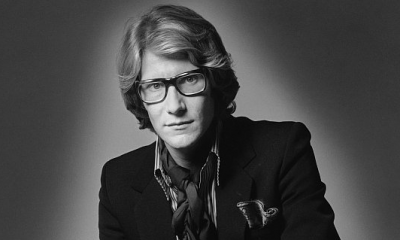History
Nelson Mandela
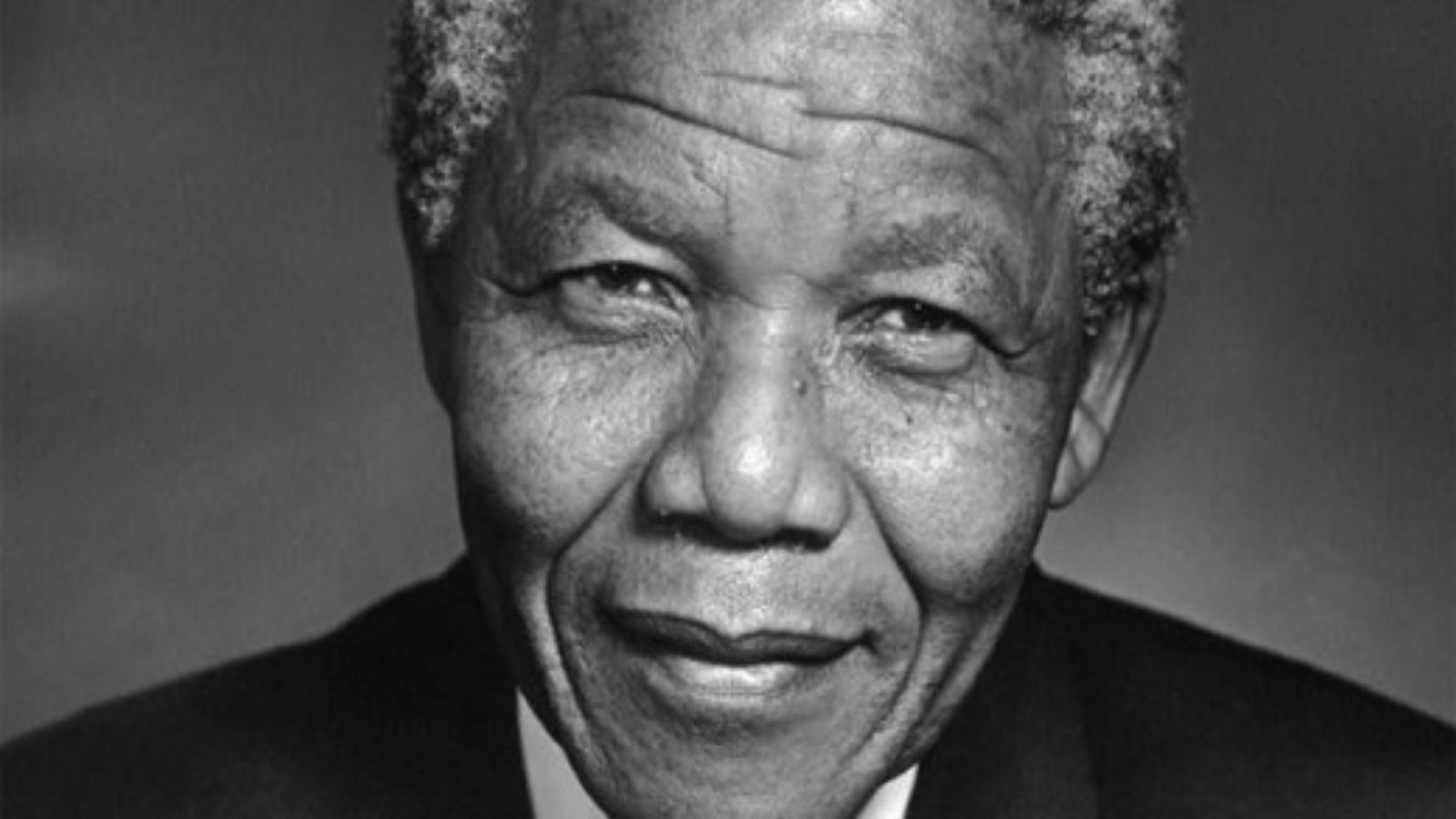
Nelson Mandela Biography
Rolihlahla Mandela, whose original name Xhosa means “pull the branch of a tree” (interpreted by the natives as “troublemaker”), and universally known as Nelson Mandela or Madiba, was a South African lawyer, anti-apartheid activist, politician and philanthropist. Mandela was born on July 18, 1918, in the small town of Mvezo located in Cape Province, located on the banks of the Mbashe River, near Umtata. Son of Gadla Henry Mphakanyiswa, tribal chief, and adviser to the monarch of Tembuland. His mother named Nosekeni Fanny, a member of the Xhosa amaMpemvu clan was the third wife of Gadla and belonging to the lineage of the House of the right hand.
The first years of Nelson were determined by custom, ritual, and taboo. He grew up with two sisters in his mother’s kraal, and at the age of seven, he was sent by his mother to a Methodist school. According to the Foundation that bears his name, he said that the name of “Nelson” came from his teacher Miss Mdingane, who called him that the first day of class in the school of the village of Qunu and it is still unknown why he chose that name particularly.
After Nelson Mandela’s father passed away, his mother took him to the palace of Mqhekezweni where he was placed under the curatorship of the regent Jongintaba Daindyebo and his wife Noengland, for many years he did not see his mother. However, together with Jongintaba and his wife he felt very well since they treated him like his own son. Mandela attended religious services every Sunday, Christianity became an important part of his life. In addition, he went to a Methodist mission near the palace where he studied the English language and Xhosa as well as history and geography, from those years, began his love for African history.
“The brave man is not he who does not feel afraid, but he who conquers that fear.”
In 1939, Nelson Mandela entered the University of Fort Hare, the only center of higher education for Black people in the country, at that time. In 1940, his studies were interrupted for supporting a student protest at the university that confronted him with possible ejection from the school. He also decided to flee to Johannesburg, due to the decision of his tutor to marry him to a girl he was not in love with. When Mandela arrived at Johannesburg, he started working as a night watchman in the Crown mining complex where he was fired when they discovered he was a fugitive. He also came into contact with the African National Congress (ANC). At the end of 1941, he would receive the visit of Jongintaba who forgave him for having fled. A year later, Mandela would return to the University of Fort Hare and graduates in Law.
In 1943, Nelson Mandela resumed his studies of higher education, enrolling in a correspondence course at the University of South Africa, to which he devoted time at night. After he passed the exams to get his B.A. Mandela returned to Johannesburg to become a lawyer, which would help him get into politics.
When he began his law studies at the University of the Witwatersrand, Mandela was the only Black student and although he suffered racial discrimination he managed to become friend with many European liberalists and communist ideas, as well as Jews and Hindus, such as Joe Slovo, Harry Schwarz, and Ruth First.
In October 1944, he married Evelyn Mase, a CNA activist from Engcobo, who was studying to become a nurse. They had two children, Madiba Thembi Thembekile born in February 1945 and later in 1947, his daughter Mazowiecki was born but will die nine months later due to meningitis. This year he also helped found the ANC Youth League, with Tambo and with Walter Sisulu, in order to promote the racial equality. A year later, he would become general secretary and two years later, president.
In 1952, Nelson Mandela led the Defiance Campaign, exhorting Black people to violate the laws of racial segregation. He is found guilty under the law against Communism, and he is banned from attending meetings or leaving the Johannesburg area. He passes the exam to be a lawyer and together with Tambo, he founded the first Black lawyer firm in the country.
On June 26, 1955, the Freedom Charter was adopted, a document drafted in secrecy that demands the achievement of a democratic, free and multiracial society. On December 5, 1956, he was arrested along with 155 people and sent to trial for high treason.
Around 1961, Mandela and the rest of the defendants are acquitted of the high treason charge. He goes underground and creates “The Spear of the Nation” (Umkhonto we Sizwe), an armed wing of the ANC, from which he becomes commander and chief. A year later, he left South Africa and attended the Panafri Conference Canada of Addis Ababa (Ethiopia). He was also in Algeria where he received guerrilla training, then he would go to London. When he returns he is judged for the illegal abandonment of the country and sentenced to five years in prison.
In 1964, at this time many African colonies had achieved independence and Mandela is prosecuted for sabotage, he declares: “I am willing to die for my country to be democratic.”
On June 12, 1964, Judge Quartus de Wet found Mandela and other activists guilty and sentenced them to life imprisonment, they were sent to Robben Island, where they remained for 18 years. Mandela was confined in a damp cell, and with a palm mat to sleep. Despite being in prison Mandela was visited by well-known South African personalities.
Since 1967, the prison conditions improved, Black prisoners were allowed to wear long pants, authorized recreational activities and improved the quality of the food. Two years later, his eldest son died in a traffic accident. In 1973, the UN declared the Apartheid crime against humanity. By 1975, Nelson Mandela was already considered a class A prisoner, which allowed him to have many visits, receive correspondence and study. He began to write his autobiography which he secretly sent to London and although it remained for several years without being published, the authorities of the prison found several written pages of his book and took away his privilege to study for four years. This allowed him to devote that time to gardening and reading, until he resumed his studies for the Law Degree in 1980.
In 1981, the journalist Percy Qoboza launched the slogan “Free Mandela” which prompted an international campaign led by the United Nations Security Council, for his release. In April 1982, Mandela was transferred to Pollsmoor Prison in Tokai, a suburb of Cape Town, along with Walter Sisulu, Andrew Mlangení, Ahmed Kathrada and Raymond Mhlaba. The conditions of this prison were better, although Mandela missed the companionship and the natural space next to the island. On December 12, 1988, he was taken to Tygerberg hospital for having fallen ill with tuberculosis caused by the humidity of the cell. Once he was recovered, he is transferred to Víctor Verster prison with better conditions. On February 11, 1990, he is released after 27 years in prison, and on March 2nd of the same year, he is elected Vice President of the ANC. By June 17, 1991, after more than four decades, the parliament of South Africa repealed the law on racial segregation of the population.
On July 6, 1991, Mandela would be appointed as the president of the African National Congress (ANC) by acclamation and be the successor of Oliver Tambo. On May 15, 1992, he received the Prince of Asturias of International Cooperation. A year later, he received the Nobel Peace Prize. On April 26, 1994, the first free elections of South Africa were held. Twenty million citizens exercised their right to vote for the first time, ending up with more than three hundred years of white domination granting Mandela 62.6% of the votes, and on May 10, 1994, Mandela would become the first black president in the history of South Africa. Mandela initiated a reconstruction and development plan improving the living standards of black South Africans in issues such as education, housing, health and employment. He also promoted a new constitution for the country that finally the parliament approved in 1996. In the same year, his autobiography “A long walk to freedom” was published.
Also in 1996, he divorced Winnie and in 1998 he married again. In March 1999, suffering from prostate cancer, he said goodbye to the parliament, naming Thabo Mbeki as the new president. When he retired from political life in June 1999, he dedicated himself to the orientation of various humanitarian causes.
In 2003, the Mandela Foundation launched a major international campaign to raise funds for the fight against AIDS. In 2008, the world celebrated his 90th anniversary with an appeal for peace. London paid tribute to him with a macro concert. A year later, the UN declares July 18th as his International Day. In 2010, on the 20th anniversary of Mandela’s release, he published “Conversations with myself”. That same year the tragedy touched him again when his 13-year-old great-granddaughter Zenani died in a traffic accident.
After suffering a prolonged respiratory infection, Nelson Mandela died on 5 December 2013 at the age of 95 years at his home in Houghton, Johannesburg (Republic of South Africa), surrounded by his family in particular his eldest daughter Makaziwe Mandela.
Before he died, Mandela said: “Death is something inevitable. When a man has done what he considers his duty to his people and his country, may rest in peace. I believe that I have made that effort and, therefore, I will sleep for all eternity.”
Few men have changed the course of history, as Nelson Mandela did, a tireless fighter, considered a global symbol of “Freedom and Hope” who despite spending 27 years in prison, managed to defeat the racist regime of apartheid, one of the most ruthless of the twentieth century. He was the first Democratic President of South Africa and marked the end of racial segregation in his country through a policy of reconciliation and Social Justice.
“Education is the most powerful weapon in the world.” Nelson Mandela.
Awards
- Lenin Peace Prize (1990).
- Bharat Ratna (1990).
- Prince of Asturias Award for international cooperation (1992).
- Nobel Peace Prize (1993).
- honorary member of the Order of Meritby Queen Elizabeth II (1995).
- Presidential Medal of the Liberty (1999).
- 50 Honoris Juris Doctor in different universities around the world.
- Nelson Mandela statue in Johannesburgo.
Written Works
- How far we slaves have come! (1991).
- Long Walk to Freedom (1994).
- Let the freedom reigns: The words of Nelson Mandela (2005).
- Nelson Mandela’s African Folktales (2002).
- Conversations with myself (2010).
- Nelson Mandela by himself (2012).
Nelson Mandela signature


History
Robert Oppenheimer
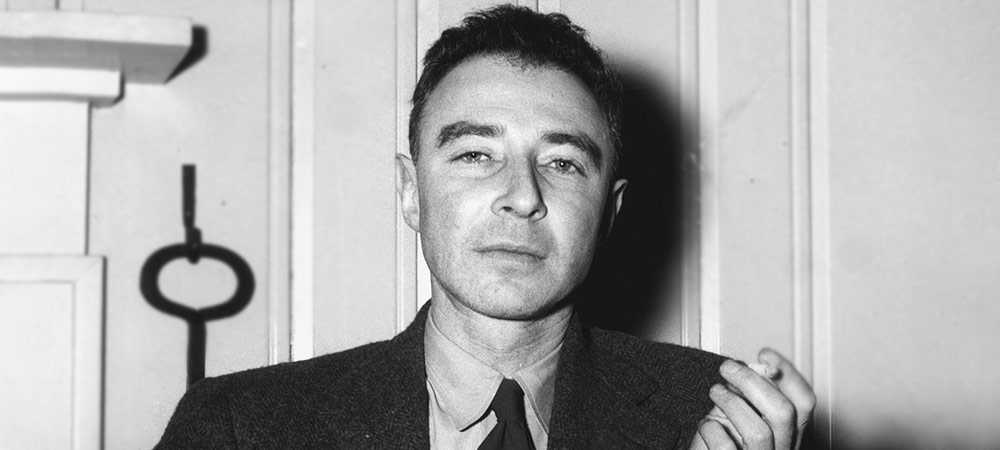
Robert Oppenheimer Biography
Julius Robert Oppenheimer (April 22, 1904 – February 18, 1967) was a physicist widely acknowledged as the father of atomic bomb. He was born in New York City, United States. Oppenheimer is renowned for his pivotal role in the development of the Manhattan Project during World War II, which culminated in the creation of the first atomic bombs.
Early years
Robert Oppenheimer was an American theoretical physicist, scientist, and university professor. He was the son of German-born Julius S. Oppenheimer and artist Ella Friedman. Coming from a wealthy and educated family in New York, his father was a Jewish owner of a significant fortune amassed through his textile factory. This allowed Oppenheimer to enjoy certain comforts and attend the best schools in the city.
In this regard, he was educated at the Ethical Culture School in New York, where he excelled as the top student, with some teachers even asserting that he was better than many of them. Upon graduating from school, he enrolled at Harvard University, where he stood out in all areas, from chemistry to Eastern philosophy, Greek, and Latin, completing his studies at the age of 21.
Career
After some time, Robert Oppenheimer decided to delve into the world of physics, capitalizing on both his aptitude for the subject and its burgeoning prominence across Europe. He moved to England, where he worked with Ernest Rutherford and J. J. Thomson. Alongside these two great scientists, he felt somewhat inadequate, as he believed his performance did not meet the required standards. However, Oppenheimer did not give up.
With the passage of time, he learned from his mentors, and by 1925, feeling more adapted, he began researching atomic energy and secondary-atomic particle energy processes at the Cavendish Laboratory.
A year later, he was at the University of Göttingen, collaborating with Max Born to develop his classical contribution to molecular quantum theory, known in physics as the “Born-Oppenheimer method”. He returned to his home country to teach theoretical physics at the California Institute of Technology and the University of Berkeley between 1929 and 1942. Oppenheimer was a highly political person. Therefore, in the 1930s, he decided to align himself with communist students to support the Republic during the Spanish Civil War, but certain actions led to the demise of his sympathy for the Communist Party.
Contribution to the Manhattan Project
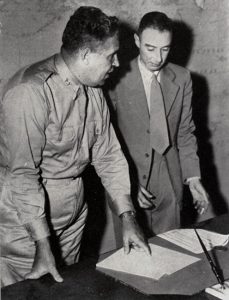
General Leslie Groves alongside Oppenheimer in the development of the Manhattan Project (Circa 1944)
The civil and political situation in Europe was becoming increasingly dangerous. By 1939, Albert Einstein and Leo Szilard warned the U.S. government about the dangers of nuclear energy falling into the hands of the Nazis. In response, President Franklin Roosevelt initiated the project for creating the atomic bomb, which was initially under military control, led by General Leslie Groves, an engineer known for overseeing construction projects, including the Pentagon. Later, Oppenheimer was brought on board to manage the administration of the project, which culminated in the construction of the atomic bomb by 1945.
Oppenheimer’s most significant contribution to the Manhattan Project was his leadership and effective coordination among diverse teams of scientists. His vision and problem-solving skills were crucial in overcoming the scientific and technological challenges involved in building an atomic bomb. He supervised the design and testing of the first atomic bombs, including the successful detonation of the plutonium bomb at the Trinity test site in New Mexico on July 16, 1945.
This American physicist had the support of many prominent figures in science, such as the great scientist Werner Heisenberg, Erwin Schrödinger, Max Born, Wolfgang Pauli, Paul Dirac, and Enrico Fermi, with whom he also developed close friendships. The work carried out by these scientists on quantum physics provided significant support for his own research. He gained valuable insights into quantum and relativistic physics, which kept him abreast of new scientific developments. He made contributions to the application of quantum theory to the concept of electron spin.
In his role as the director of the Institute for Advanced Study in Princeton, he fostered discussion and research in quantum and relativistic physics. In 1953, his past ties with the Communist Party led to certain defamation issues. As a result, he was called to a security hearing where the accusation was dismissed, but his access to military secrets was still prohibited. One of the institutions that attacked the scientist the most was the Federation of American Scientists. Oppenheimer was humiliated, and his communications were monitored. Nine years later, President John F. Kennedy, in an effort to rectify this mistake, awarded him the Enrico Fermi Award, granted by the Atomic Energy Commission, which he received from President Johnson himself.
“Now I Am Become Death, the Destroyer of Worlds”.
Oppenheimer, confessed to President Harry Truman, that he was not entirely comfortable with the fate of the atomic bomb. After some time, the Cold War erupted, and the Soviet Union announced its possession of an atomic weapon. In response, the United States decided to develop an even more powerful weapon. They approached Oppenheimer to lead the Atomic Energy Commission, but he declined the offer, resulting in his removal from the position. However, he remained the director at the Institute for Advanced Study, thanks to the support given by Einstein, Von Neumann, and Bohr.
After this event, his life took a different turn as he decided to distance himself from the laboratories and leaned towards writing about the studies conducted throughout his scientific career. Notable works include “Science and the Common Understanding” (1954) and a book related to electrodynamics (published posthumously in 1970). In the aftermath of the events in Japan and the grave consequences the atomic bomb had on humanity, he made several proposals aimed at internationally regulating the use of atomic energy to ensure peace.
He staunchly opposed the creation of the hydrogen bomb. However, despite his efforts and those of the General Advisory Committee of the Atomic Energy Commission, its development continued. Disheartened, Oppenheimer made the decision to retire from Princeton in 1966. A year later, on February 18, 1967, he passed away from throat cancer.
Filmography
Visual works inspired by Robert Oppenheimer:
- “Fat Man and Little Boy” (1989): Oppenheimer was portrayed by Dwight Schultz in this film.
- “One Day” (1989): The scientist was portrayed by David Strathairn.
- “Oppenheimer” (2023): The biography of Julius Robert Oppenheimer was brought to the screen in this movie, based on the biographical work “American Prometheus” by author Kai Bird. The character of Julius Robert Oppenheimer was played by Cillian Murphy and directed by Christopher Nolan.
History
Threads

History of Threads
Threads (July 5, 2023) is an application and social media developed by the Meta group, designed to compete with Twitter. While it shares some features with Twitter, it has its own distinctive approach. This application has been specifically designed to share text-based updates and engage in interactive public conversations.
What is Threads?
Threads is a new application and social network created by the Instagram team, which is part of the Meta group, led by billionaire entrepreneur Mark Zuckerberg. The launch of Threads has had a positive impact on the market, as Meta’s stocks experienced an increase of nearly 3% during an unfavorable session on Wall Street. Furthermore, in after-hours trading, the stocks continued to rise, increasing by almost 1%. This indicates a favorable reception from investors and the market.
The application has been specifically designed to share moments through text-based updates. It provides a unique and standalone space for real-time posting and engaging in public conversations. With the new application, you have the opportunity to follow and connect with friends and creators who share your same or similar interests, including the people you follow on Instagram.
Threads has been developed with the aim of competing with Twitter and presents features and similarities that go beyond simple text sharing. Just like on Twitter, in this new app, users can create threads, share photos, videos, and links. The application is currently available for launch on iOS and Android devices. It is worth noting that currently, an Instagram account is required to access the app.
Mark Zuckerberg and his Meta team have taken advantage of the recent changes in Twitter following the acquisition by Elon Musk. Twitter has reduced some of its security options, reserving them exclusively for users who purchase Twitter Blue. Meta has identified this gap and has seized the opportunity to attract users to join Threads. The new application stands out for maintaining a wide variety of security controls and providing a safe experience for users.
“The idea is to build an open and friendly space for communities”- Adam Mosseri.
Differences between Threads and Twitter
- Threads currently follows the same security policies as Instagram.
- In Threads, it is not possible to save posts as drafts. You must share posts immediately or delete them.
- Threads does not have a set limit on the number of posts that can be viewed. There is no maximum limit on viewed posts in Threads, unlike the recent limitation imposed by Twitter of 600 posts.
- The new social media does not yet have direct messaging, unlike Twitter.
How to create an account on Threads?
To get started, you need to go to the mobile device’s app store and search for “Instagram Threads”. Once found, click on download and install the application. Once installed, open the app and access Threads using your Instagram username.
Next, complete your personal information and adjust the security options according to your preferences. Once this process is done, you will be ready to explore the application, change your profile picture, and start following people and topics that interest you.
It should be noted that automatically, anyone under the age of 16, or under the age of 18 in certain countries, their profile will be set to private when joining Threads.
When Instagram users sign up for this new social network, they receive a Threads badge on their Instagram profile. This badge displays a number indicating the sequence in which they created their account on this new app.
How is Threads used?
Threads offers a user interface similar to that of Twitter, allowing users to interact with other users’ posts from the “Home” section. Additionally, through the search icon, it is possible to find other users on this red social.
In the “Home” section, you will find posts from the people you follow, as well as recommended content from new creators that you have yet to discover. Posts have a limit of 500 characters and can include links, photos, and videos up to five minutes in length. Additionally, you have the option to easily share a Threads post to your Instagram Story or share it as a link on the platform of your choice.
To create a thread in this app, simply click on the notebook icon. Once you have written your message, publish it and continue with the text at the bottom. Just like on Instagram, the heart icon shows recent activity on your account, allowing you to see feedback and interaction with your posts.
Similarly, it is important to note that if you block an account on Threads, the same account will also be blocked on Instagram. This means that blocking actions are applied collectively on both platforms.
How to delete an account on Threads?
It is important for users to note that if they wish to delete their account on Threads, it is likely that their Instagram account will also be deleted. Currently, the only available option is to temporarily deactivate the account on this application, but it can only be permanently deleted if you delete your Instagram account.
Artist
Metallica history

Metallica history
Metallica is an American thrash metal band from Los Angeles and based in San Francisco. It is considered one of the leading groups in the subgenre and throughout its 35-year career it has won numerous awards, including 9 Grammys, 2 American Music Awards, 2 MTV awards, 2 Billboard awards, and a star on the Hollywood Walk of Fame.
1980 – Beginnings
The history of the band begins in 1980 when Lars Ulrich, the son of tennis player Torben Ulrich, placed an ad in the magazine Recycler looking for a guitarist for a metal band influenced by the British New Wave of Heavy Metal. James Hetfield responded to the ad and joined Ulrich as the first members of the band. Ron McGovney joined as bassist and Lloyd Grant as lead guitarist. With this first formation, the band recorded its first demo, Hit the Lights, considered one of the first thrash metal songs. However, they soon realized that the lineup was not working and Lloyd was replaced by Dave Mustaine.
Despite the early disastrous performances due to the lack of experience of the members, the band continued and released No Life ’till Leather, showing a more aggressive sound. Additionally, Ron McGovney was replaced by Cliff Burton as bassist and Dave Mustaine was replaced by Kirk Hammett due to his alcohol addiction. Since then, James Hetfield has taken on both the role of rhythm guitarist and singer.
1983 – Release of ‘Kill ‘Em All’
With this new lineup and having Johnny Zazula as their manager, the band released in 1983 Kill ‘Em All, which gained notoriety in the metal scene and sold more than 300,000 copies. After a tour of the United States and a concert in Holland where they reached their largest audience to date, with 5,000 people, the band released the album Ride the Lightening with Megaforce Records in 1984, which received critical acclaim for its melodic sound.
“1991 – Release of the ‘The Black Album'”
After this work, the band released Master of Puppets in 1986 and embarked on a promotional tour that was cut short by an accident in which the bassist Cliff Burton died. After reflecting on their future, the band incorporated Jason Newsted and recorded …And Justice for All, an album with a denser sound that, despite its commercial success and a Grammy nomination, received criticism for being unoriginal and moving away from heavy metal. However, it wouldn’t be until the release of their album Metallica in 1991, known as The Black Album, that they reached great success, selling half a million copies in the first week of sales in the United States and reaching the top of the Billboard chart. This work led to two similar albums, Load in 1996 and ReLoad in 1997, which received negative reviews for their proximity to alternative rock and their distance from traditional heavy metal, disappointing their older fanbase.
“2001 – Documentary, Tours, Awards”
In 2001, Jason Newsted left the band and Metallica struggled to find a suitable replacement for some time. Therefore, they had to record their next album, St. Anger, with their producer Bob Rock playing bass. However, Robert Trujillo soon joined the band’s lineup. Three years later, the documentary Some Kind of Monster was released, which portrays the recording process of the last album and the internal conflicts that the band had with Dave Mustaine. After a tour in 2006 in which they played Master of Puppets again to celebrate its 20th anniversary, and the release of a compilation of their videos titled The Videos, Metallica was inducted into the Rock and Roll Hall of Fame. Later, they released Death Magnetic in 2008 and the conceptual album Lulu in 2011, which was poorly received by their fans. In 2012, the band founded their own record label, Blackened, and performed a concert in Antarctica to raise awareness about polar melting and environmental crisis. In 2016, they released Hardwired… to Self-Destruct. Currently, the band is still active.
Culture
Cleopatra
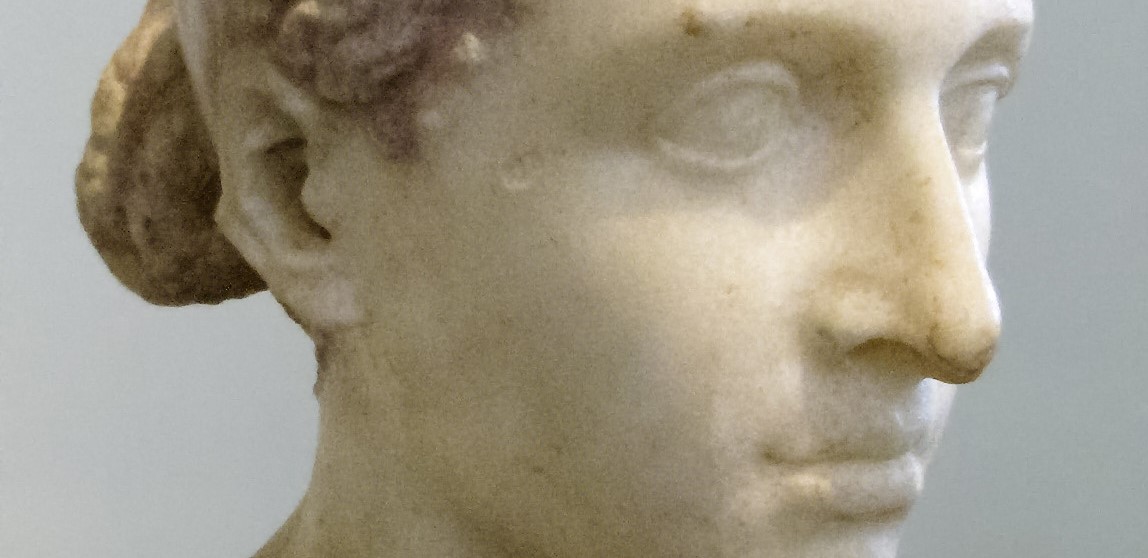
Biography of Cleopatra
Cleopatra (69 BC – August 12, 30 BC) was the last Queen of Egypt, belonging to the Ptolemaic dynasty. She was born in Alexandria, Egypt. Her father was Ptolemy XII and her mother was Cleopatra V Tryphena. Cleopatra married her brother Ptolemy XIII, as a strategy to maintain the reign, then they both inherited the throne in 51 BC. Cleopatra is said to have possessed exceptional beauty. Her father was not well-liked by his people as he showed little interest in the problems of the Egyptian people, He was a corrupt ruler who squandered the kingdom’s money on lavish parties.
She was able to maintain her throne thanks to the Roman help she received in exchange for her continuous bribes and promises of various tributes. The Romans supported the king because he promised them easy access to the gold and wealth of Egypt. In each conflict, Rome played the role of arbitrator in the popular uprising, Ptolemy, went to Rome in search of military aid to suppress it. His wife Cleopatra and one of her daughters were left as regents of the country, then his wife died. The Alexandrians placed Queen Berenice IV on the throne and sent a delegation to Rome to arbitrate the conflict between father and daughter.
Soon after, Ptolemy XII was able to defeat the army of Archelaus, second husband of Berenice IV, and was returned to the throne. To ensure power, he had his daughter Berenice executed, it was the year 55 BC. The king died four years later, leaving the throne to his daughter Cleopatra VII Philopator and his son Ptolemy XIII Dionysus II. Cleopatra was the first of this dynasty to learn to speak the Egyptian language; she also learned Greek, Hebrew, Syrian and Aramaic and possibly Latin. She was also educated in literature, music, political science, mathematics, astronomy and medicine.
The situation in Egypt was becoming worse, farmers suffered severe famines, the Egyptian currency was weakening and the slow bureaucracy was hindering recovery: the country was becoming increasingly dependent on Rome. In response, farmers staged uprisings and created bands of outlaws that caused great harm; Additionally, the royal family also did not have good relations. Her younger sister Arsinoe, disagreed with her policy of helping the Romans and wanted to reach the throne. Ptolemy XIII, very young and manipulable, was practically handled by three advisors who forced him to expel his sister from the throne by overthrowing her with a command led by his advisors Potino and Aquilas.
Cleopatra attempted to regain power, gathering a good army for this purpose, although she did not succeed. Soon conflicts broke out between the two brothers and spouses, which led to the overthrow of Cleopatra. However, when the Roman civil wars began: Julius Caesar went to Egypt and helped Cleopatra in the conflict with her brother. During the Alexandrian War, both Pompey and Ptolemy XIII died, and the legendary Alexandria Library was burned.
Cleopatra was first and foremost a solution for Julius Caesar, and also his lover, she tried to use her influence over Caesar to restore Egypt’s hegemony in the Eastern Mediterranean as an ally of Rome; the situation intensified when she had a son with Julius Caesar: Caesarion. When Julius Caesar was assassinated in 44 BC, Cleopatra attempted to seduce his immediate successor: consul Mark Antony. Being allies, they imposed their force in the East, creating a new Hellenistic kingdom that managed to conquer Armenia in 34.
Cleopatra, in addition to being a skilled ruler, was also known for her beauty and intelligence. She was fluent in several languages, including Egyptian, Greek, Hebrew, Syrian, and Aramaic, and was well-educated in literature, music, politics, mathematics, astronomy, and medicine. She used her charm and wit to strategically seduce powerful men in order to maintain control of her kingdom. She had a son, Cesarian, with Julius Caesar and later became the lover of Mark Antony. However, after the defeat of their alliance and the death of Antony, she was captured by Augustus and brought to Rome as a war trophy.
In the face of this situation, Cleopatra had herself bitten by an asp to end her life. Augustus took advantage of the situation to also murder her son Cesarión, thus extinguishing the Ptolemaic dynasty and later annexing Egypt to the Roman Empire. Cleopatra’s life inspired many writers, painters, sculptors and filmmakers. For example, between 1540 and 1905, over 200 plays, five operas and five ballets emerged. Let’s mention some important literary works: Cleopatra and Mark Antony (1606) by William Shakespeare, All for Love (1678) by the Englishman John Dryden and Caesar and Cleopatra (1901) by George Bernard Shaw. Even one of the comics of the popular Asterix the Gaul was dedicated to her.
Cleopatra has been the subject of many paintings and sculptures. Additionally, her life has been depicted in films, such as Cléopâtre (1899) and the famous and controversial 1963 production directed by Joseph L. Mankiewicz: Cleopatra, starring Elizabeth Taylor. Another production, Marco Antonio y Cleopatra was released in 1972. A more recent, less ambitious film was Cleopatra (1999). Later, the British Museum dedicated an exhibition to Cleopatra, sparking an interesting debate about her beauty.
History
Grupo Firme

History of Grupo Firme
Grupo Firme is a musical group of Mexican regional music from Tijuana. It was created in 2014 and its members are: Eduin Cazares (leader and vocalist); Joaquín Ruiz (bass guitar); Jhonny Caz (vocalist), Abraham Hernández (second voice); Christian Téllez (bass); Dylan Camacho (accordion); and Fito Rubio (drums). Initially they made themselves known on social networks with some covers and in 2017 they made their debut with their first album Past, Present, Future. In 2018, their first hits, Pídeme, El Roto and Juro Por Dios came out and a year later they became famous with the hit El Amor No Fue Pa’ Mi, among other hits. Currently they are seen as the new fashionable group.
The beginnings
United by their love of music and coming from different parts of Mexico, the seven members of the group met in Tijuana. They grew up and began their careers in this city as members of different groups, although they knew each other from their work in the artistic industry. The founders of the group were Eduin and Joaquín, who coincidentally joined various groups before founding the group in early 2013 or 2014.
Joaquín and Eduin started in the group Reto Sierreño, then moved on to the groups Aventado2 de Tijuana and Los 4 de la frontera, and finally coincidentally joined the group Fuerza Oculta. This last group became, after some changes, the Grupo Firme, although it was initially called Grupo Fuerza. Because many groups had the same name, the members decided to opt for a synonym and chose “Firme”.
This is how Grupo Firme was born, with Eduin as the vocalist and leader, Joaquín on the bass guitar, Abraham and Jhonny as second voice, Christian on the bass, Dylan on the accordion, and Fito on the drums.
With the help of their manager and representative Isael Gutiérrez, who is also the head of the Music VIP Entertainment label, the group took its first steps in bars and events. At the same time, they made themselves known on social networks and other platforms by uploading covers of recognized artists, such as Los Tigres del Norte, José Alfredo Jiménez, Los Tucanes de Tijuana, and others. Often, the group uploaded songs at the request of the public, so they didn’t take long to have their own fanbase.
Grupo Firme: debut and career
In April 2017, after three years of performances and covers on social media, the group released its debut album, “Past, Present, Future”. This album consisted of twelve songs, highlighting “De Sol a Sol”, “Metas Cumplidas”, “Perdóname”, and “El de los Huaraches”. Although the album was not very successful, it managed to make the group known. A few months later, the group returned with “El Barco” (2017), a fifteen-song album with the tracks “El Bueno de Tijuana”, “Dile”, “Gente de Verdad”, and “La Interezada”.
In addition, that year, the group collaborated with Los Buitres de Culiacán Sinaloa on the album “En Vivo Desde Tijuana los Buitrones y los Firmes” (2017). Success finally arrived in 2018 with the singles “Pídeme”, “El Roto”, and “Juro Por Dios”. That year, the group was quite active, releasing singles, collaborations, and making several appearances. They even went to Colombia, where they were well received and recorded their “En Vivo desde Medellín Colombia” (2018). The album, which included the tracks “El Teclas”, “El Peña”, and “El Flaquito”, was quite popular within and outside of Mexico.
The group finally achieved fame in 2019 thanks to the releases of “Me Cansé de Amarte” and the hit “El Amor No Fue Pa’ Mí” (ft. Banda Coloso). Later came the successful “El Muelas”, “En Realidad” with Banda Coloso, “Lujos y Secretos” with Quinto V Imperio, and “Porque Te Quiero” with Luis Alfonso Partida “El Yaki”. They also released that year the singles “Qué Me Vas A Dar Si Vuelvo”, “El Panal”, and “A Ti Te Conviene” with Calibre 50.
The successes continued in 2020. The group began the year by releasing the single “La Estoy Pasando Mal”, and later collaborating with Enigma Norteño on the song “Mi Pretexto de Borracho”. Later they appeared on the single “Yo Diría” by Uziel Payan and collaborated with Marca MP on “El Güero”. In March, “Acábame de Matar” was released and in April they premiered “Quiero Pistear” with Luis Ángel “El Flaco”.
Their second live album, “En Vivo Desde Anaheim, CA”, was released in July of this year, including their biggest hits: “Pídeme”, “Que Me Vas a Dar Si Vuelvo”, “El Roto”, “Descuide”, “Porque Te Quiero”, “El Amor No Fue Pa’ Mí”, among others.
In 2022, the news is released that the band, Grupo Firme, breaks the attendance record with more than 280,000 people in Mexico City’s Zócalo. In this way, this renowned band surpasses the record that belonged to Vicente Fernández, who had 217,000 people. Prior to these last two, Justin Bieber and Shakira had the record, with the attendance of 210,000 people present in the Zócalo.








